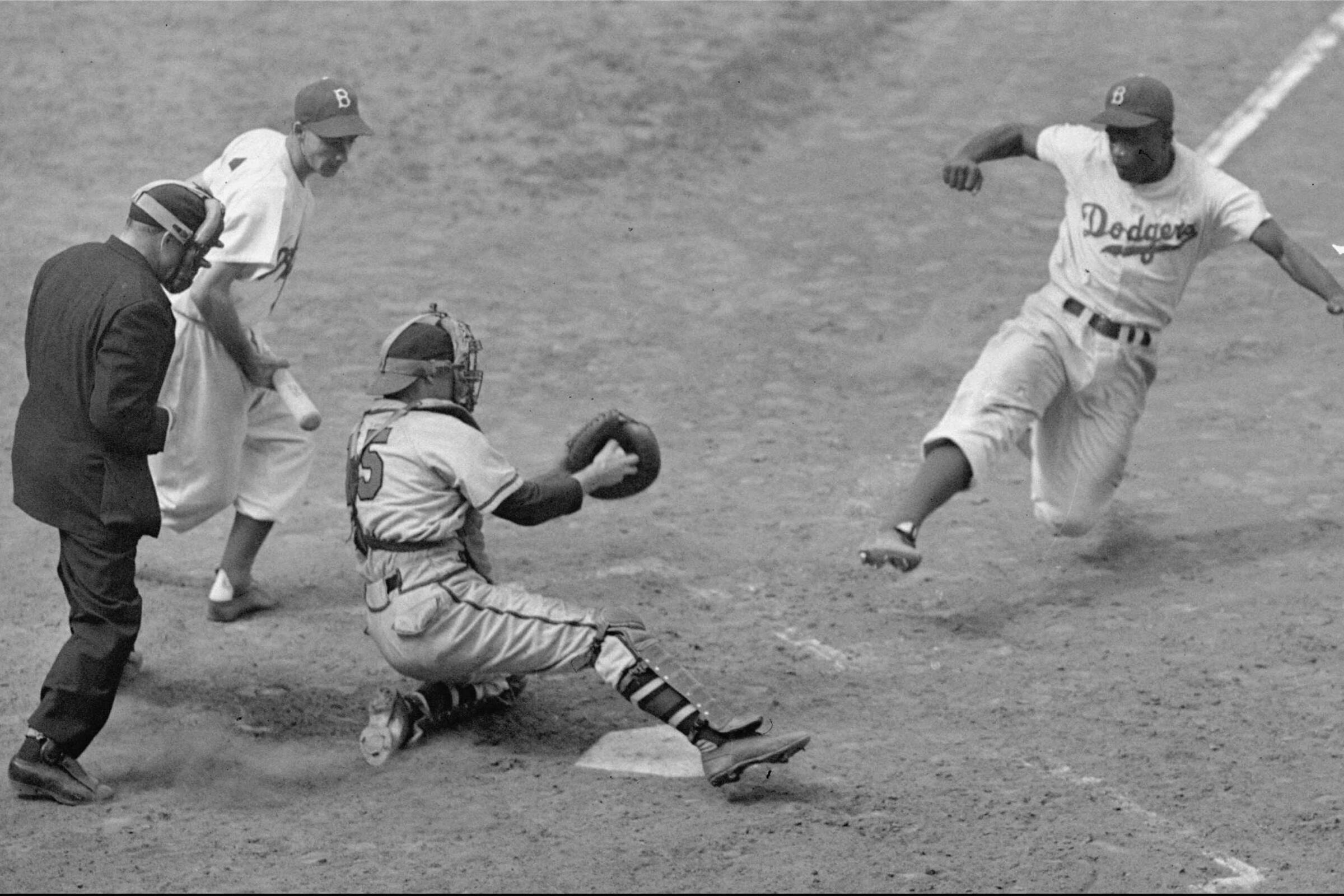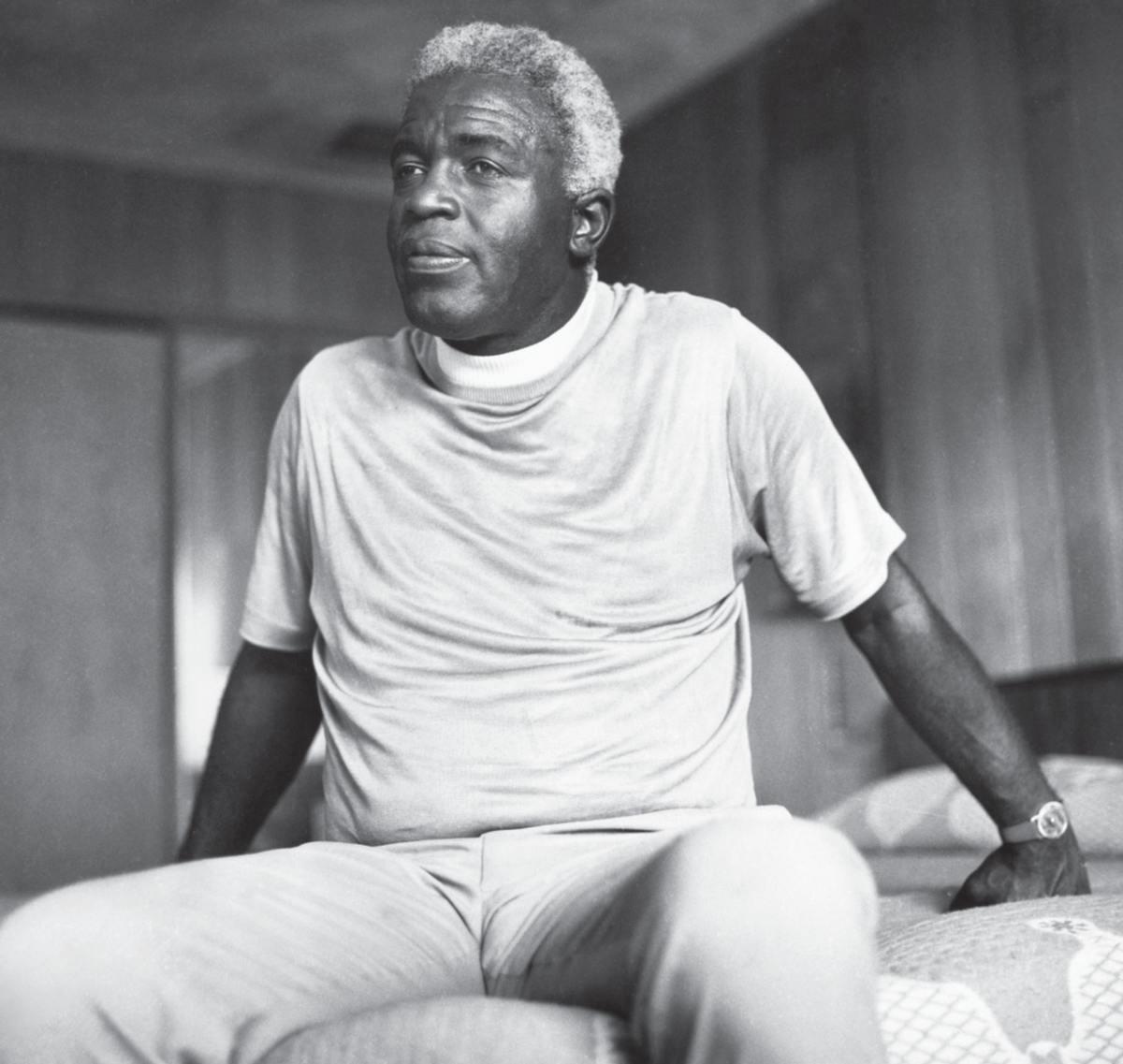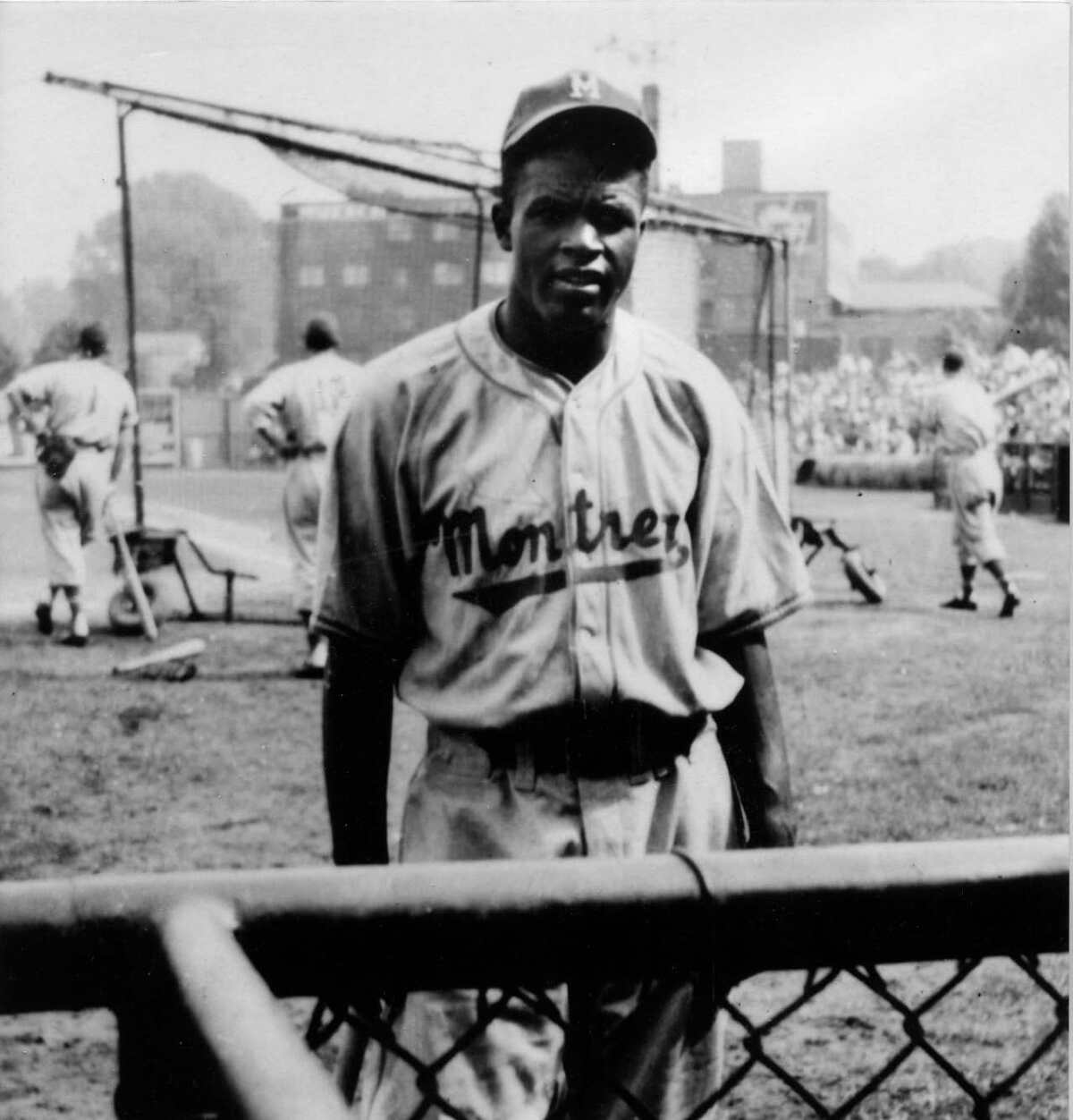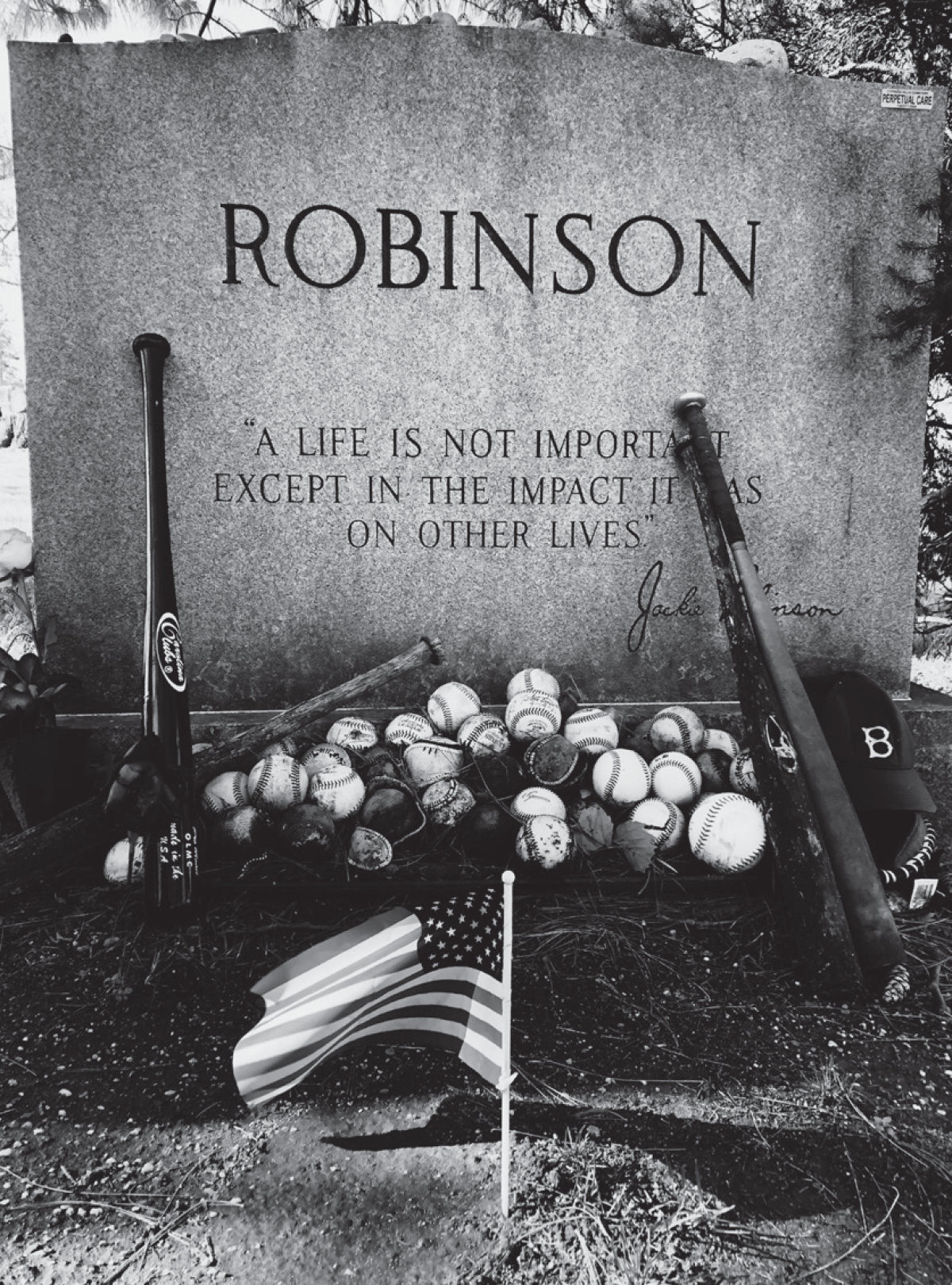Sign up for our Book Club newsletter
Get the latest news, events and more from the Los Angeles Times Book Club, and help us get L.A. reading and talking.
You may occasionally receive promotional content from the Los Angeles Times.

On the Shelf
True: The Four Seasons of Jackie Robinson
By Kostya Kennedy
St. Martin’s: 288 pages, $30
If you buy books linked on our site, The Times may earn a commission from Bookshop.org, whose fees support independent bookstores.
April 15, 1947, dawned wet and cold. Before heading out to become the first Black baseball player in Major League Baseball, Jackie Robinson joked to his wife that he’d be easy to spot: “I’ll be number 42.”
Seventy-five years later, this Friday, every major leaguer will wear 42 on Jackie Robinson Day, a reminder of Robinson’s lasting influence. But in the half century since his early death, as with any legend burnished over time, his story has been worn smooth — often reduced to his accomplishments during that historic season.
The truth is far richer and more complicated. Robinson was a pioneer of the civil rights movement, breaking ground before President Truman integrated the troops, before Rosa Parks refused to move, before the Rev. Martin Luther King Jr. marched on Washington. The role defined the rest of his life.
Kostya Kennedy’s engrossing and entertaining new book, “True: The Four Seasons of Jackie Robinson,” joins a long list of biographies (and autobiographies) of the player. But Kennedy takes a unique approach by focusing largely on four particular years, foregrounding untold or overlooked stories to bring Robinson vividly to life:
1946, when he broke the color barrier in the minor leagues; 1949, his MVP year and a turning point in his battle with racist players; 1956, as Robinson neared retirement and cast his eye toward other prizes; and 1972, the year of his death and his final reconciliations with the sport and the world.
Seventy-five years ago Jackie Robinson broke baseball’s color barrier. Fifty years ago he returned to Dodger Stadium, a thaw in a frosty relationship.
“I’m hoping these microscopic slices that show him at different stages reveal aspects of Jackie that haven’t been emphasized as much before,” Kennedy said in a video interview.
And since Robinson’s epitaph reads: “A life is not important except in the impact it has on other lives,” Kennedy also spoke to white Brooklyn Dodgers fans who credited him with changing their minds and their lives. “They were stand-ins for thousands of kids and lessons they absorbed,” Kennedy says. “Jackie Robinson gave them a way to understand things they weren’t taught in school.”
This interview has been edited for length and clarity.

Why does Robinson’s story still matter?
There was a consistency to his approach, yet he was clearly very adaptive on and off the field.
Before 1949 he didn’t want a newspaper column because he didn’t want to stir up controversy. But after that he becomes an agitator, much more open and engaged in discussing important civil rights issues. If he didn’t become aggressive, would he have been MVP that year? His ability to react to the different situations but hold true to his beliefs is something we can learn from.
Your book doesn’t focus much on his childhood: Born in Georgia but raised in Pasadena. How did Pasadena and his time at UCLA shape him?
He faced racism there but there was not the segregation of the American South. Playing with white athletes and having friends who were Black and white helped make a new world seem possible. He might not have had that sense of possibility in Georgia. Also, Pasadena was a hotbed for sports, a good place to excel and be challenged as an athlete.
In 1972, 25 years after he broke MLB’s color barrier, Robinson reflected on the ongoing fight for equality. Former Times sportswriter Ron Rapoport recounts that interview just months before Robinson’s death.
You go over specific details of America after World War II, including the 1946 lynchings of Black veterans. Why was that important?
People were saying, “Hey, isn’t this great, Jackie Robinson is getting to play baseball.” But these other things were going on that shaped who he was and it’s all part of the same story. He’s not the athlete he is without everything going on inside him and around him — he was very intelligent and very aware of his surroundings.

You also note a letter in the Atlanta Constitution in response to those murders about the need to give Black people the “basic rights and opportunities of American citizens.” That letter was by a 17-year-old — his first published piece — signed “M.L. King Jr.”
I wanted to remind people how early Jackie Robinson came in the civil rights fight. Obviously in one sense the struggle has been going on for hundreds of years, but Martin Luther King had not yet given a public speech when Jackie broke in.
For all the biography, politics and sociology, this is also a baseball book. But you often weave the elements together — noting that his aggressive behavior on the bases, especially during rundowns, could be seen symbolically as bravery and defiance.
The way he played cannot be divorced from who he was, what he did and the message he sent. He represents something in a physical sense for people, without having to always say this is right, this is wrong. He could show it by the way he played and that was a crucial part of who he was and what he accomplished.
It’s Jackie Robinson Day, when baseball celebrates one of the greatest of all time
You use modern metrics like “wins above replacement” to show how dominant he was at his peak, yet you also highlight his psychological impact on teammates and opponents, which can’t be quantified.
He changed the game in so many ways. There were times where he’s on third base, bouncing down the line, and it unnerves the pitcher so much he hits the next batter with a pitch so now there’s another runner on.
To Robinson even getting caught stealing could have value. In 1949 he was caught 16 times, but 12 times it was with two outs and only twice was it when Brooklyn was trailing. So it was always a calculated risk. And he knew this would keep pitchers and catchers worrying about him in other situations.

As you argue quite persuasively, if Dodgers general manager Branch Rickey had promoted Robinson to Brooklyn in late 1946, they may well have won the pennant, possibly altering the future of their World Series struggles. Even just as a pinch-runner he could have been a game-changer that year. Was Rickey too cautious?
From a baseball decision they should have brought him up, but from the social experience, Rickey felt it was too dangerous to the whole experiment. What if Robinson struggled at bat in August or dropped a ball? We know only in hindsight that the Dodgers didn’t win the pennant.
The Robinson experiment for the most part worked out so well, it’s hard to criticize — it’s like saying the Beatles should have let George Harrison record more songs. The Beatles were so great, so what can you say?
Final question: Safe or out?
[Kennedy, knowing this refers to Robinson’s stunning steal of home in the 1955 World Series — a “safe” call Yankees catcher Yogi Berra always disputed — exhales and pauses.]
I’ve looked at it a million times and I don’t know how anyone can tell. When you watch him running down the line he looks out, no question, but when you see the blown-up version of the still photo and you see Yogi’s position and Jackie’s foot, he looks safe.
Sign up for our Book Club newsletter
Get the latest news, events and more from the Los Angeles Times Book Club, and help us get L.A. reading and talking.
You may occasionally receive promotional content from the Los Angeles Times.